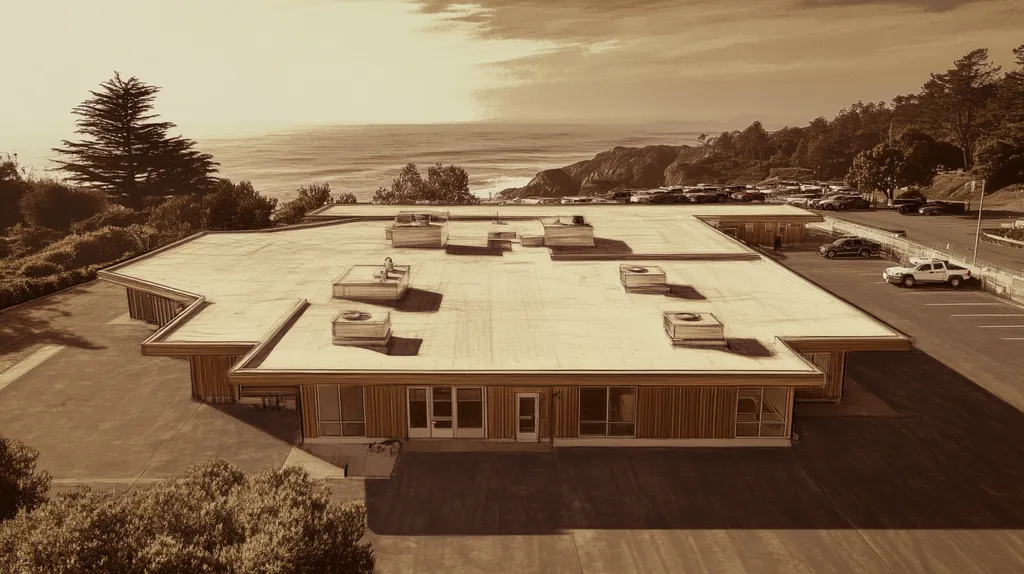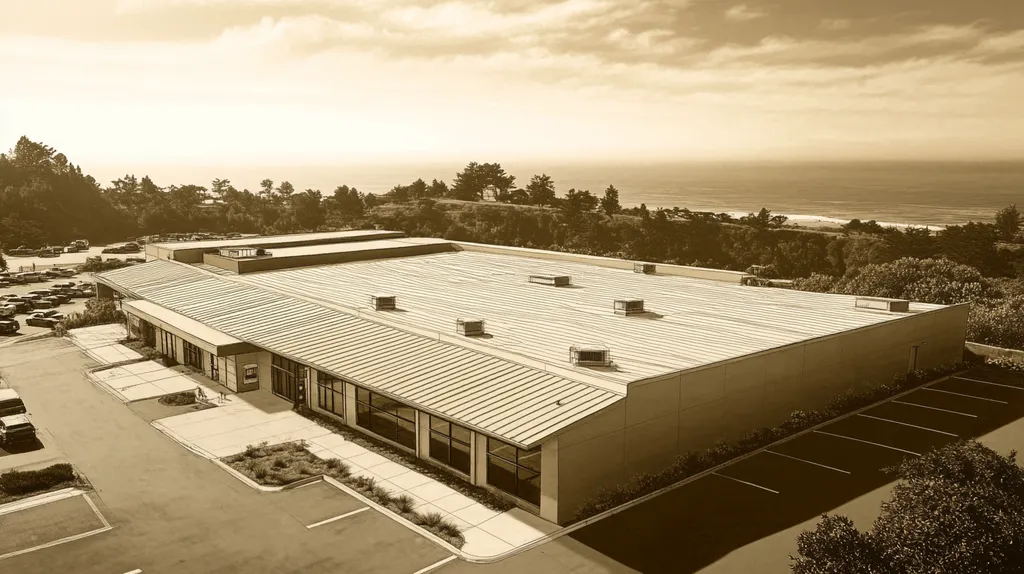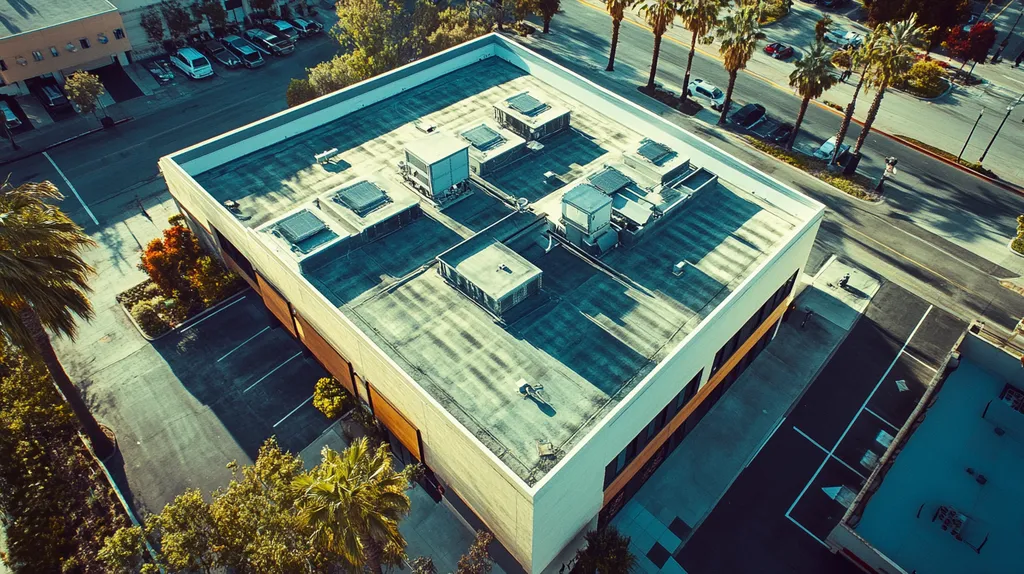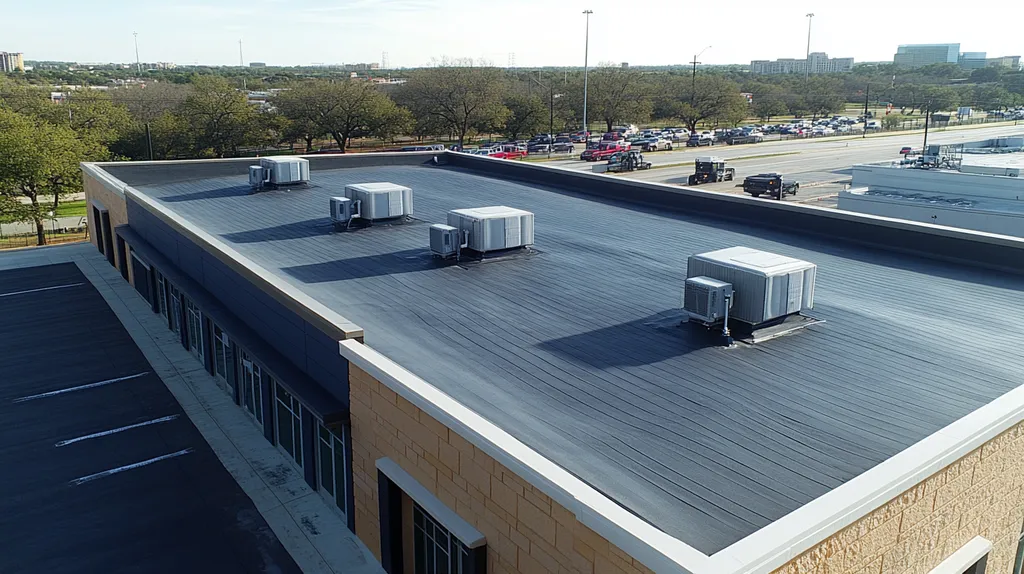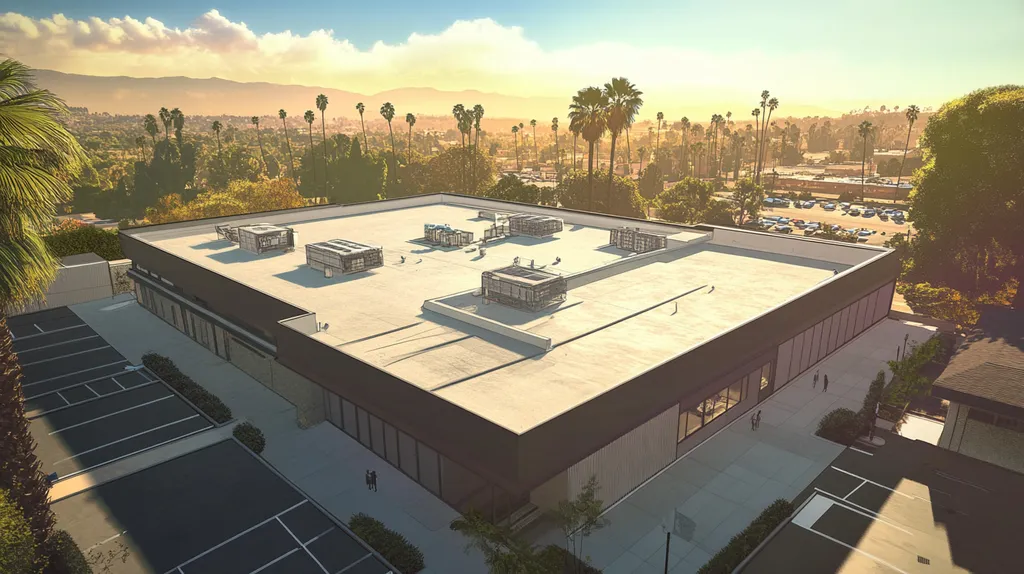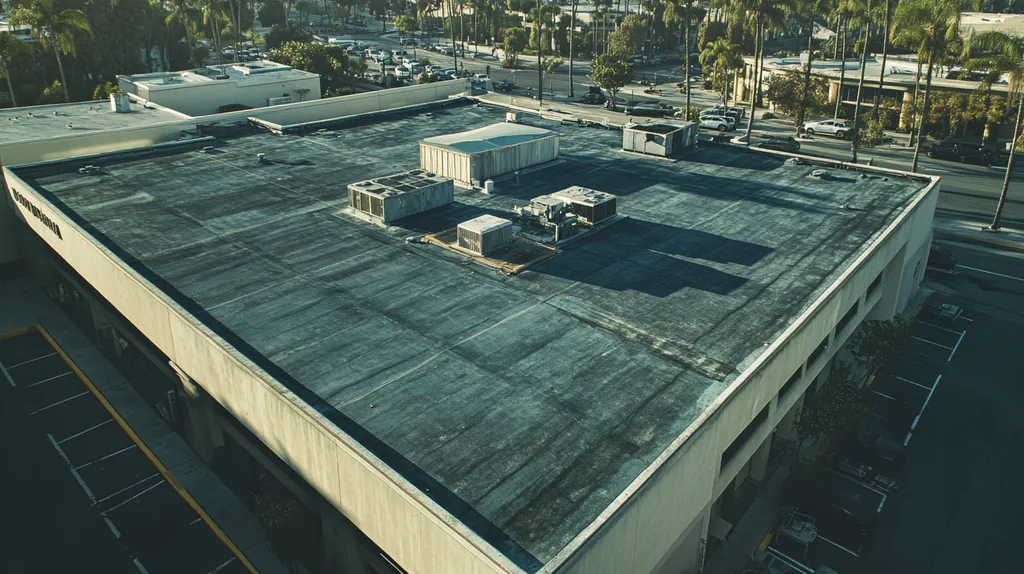Chemical exposure poses a critical threat to industrial roofing systems, with 65% of premature roof failures linked to inadequate chemical resistance. Recent industry studies show that chemical damage can reduce a roof’s lifespan by up to 40% while increasing maintenance costs by thousands annually.
For facility managers and property owners, selecting and maintaining the right chemical-resistant coating represents a crucial decision that impacts safety, operations, and bottom-line performance. Understanding key factors like coating compatibility, regulatory compliance, and proper application techniques is essential.
This comprehensive guide examines vital considerations for evaluating chemical resistance in industrial roof coatings, from performance metrics to long-term maintenance protocols.
SECTION 1: PERFORMANCE FACTORS
The performance of roofing systems in industrial environments is critical to maintaining safety and operational efficiency. A damaged roof can trigger high expenses, downtime, and significant safety risks. Studies indicate that roofs failing from chemical damage can encounter additional costs that reach up to 20% of their original budget. By grasping key performance factors such as chemical compatibility, resistance to common chemicals, and overall durability, property owners can effectively manage their roofing systems for optimal longevity and protection.
Chemical Compatibility and Coating Integrity Assessment
Understanding chemical compatibility is essential when selecting roof coatings for industrial applications. Coatings should be evaluated against the specific chemicals present in a facility to ensure they stand up to potential damage. For example, roofs in acidic environments necessitate coatings that offer robust corrosion resistance.
Coating integrity is a closely linked performance factor, as even minor defects can create pathways for chemicals to infiltrate and cause damage. Regular inspections, including integrity assessments, are crucial for identifying these issues before they escalate.
Utilizing advanced testing methods—like accelerated aging and chemical resistance tests—allows facilities to simulate prolonged exposure to chemicals, equipping them with vital data on performance. Facilities prioritizing these evaluations can significantly reduce the risk of costly repairs down the line.
Key Action Items
Resistance to Common Industrial Chemicals and Solvents
Industrial roofs encounter a wide array of chemicals that can deteriorate roofing materials if not properly managed. Coatings for roofs exposed to petroleum products, for example, need to be specially formulated to handle such harsh exposures.
Different types of coatings—such as elastomeric, polyurethane, and polyurea—exhibit varied levels of resistance to these substances. Thorough evaluations of these attributes during the selection process can enhance the roof’s longevity.
Implementing consistent chemical testing ensures the selected coatings maintain effectiveness over time. Facilities that track their chemical usage meticulously can make informed choices regarding their roofing materials.
Key Action Items
Durability Under Environmental and Mechanical Stress
Durability is a paramount performance factor influencing the lifespan of roof coatings in industrial settings. These roofs must cope with extreme environmental conditions and mechanical stress that can lead to failure if coatings are not appropriately chosen.
Additionally, roofing systems are often subjected to physical impacts from heavy equipment, debris drops, and maintenance activities, which can undermine a coating’s ability to function correctly. Therefore, it’s vital to select coatings designed to withstand these challenges.
Testing durability under simulated environmental conditions can unveil potential points of weakness. Facilities that leverage such data can make roofing selections that align with their specific operational demands.
Key Action Items
SECTION 2: FINANCIAL CONSIDERATIONS
The financial stakes of choosing the right chemical-resistant coatings for industrial roofs cannot be overstated. A poor selection can result in expensive repairs and costly downtime, impacting both operational efficiency and budgets. A recent survey revealed that 60% of industrial facility managers face unexpected roofing costs due to inadequate chemical resistance. Therefore, assessing the financial implications of coatings is crucial for making informed decisions.
Cost-Benefit Analysis of Chemical-Resistant Coatings
Investing in high-quality chemical-resistant coatings may involve higher initial costs, but the financial benefits often outweigh these expenses over time. For instance, a facility that chooses premium coatings could incur 30% more upfront costs yet see up to 50% savings in repair expenses over a decade. This is particularly relevant in environments where aggressive chemicals are present.
These coatings effectively minimize damage from acids and solvents, aiding in preserving the roof’s integrity. A comprehensive cost-benefit analysis should account for potential savings from reduced repairs, decreased downtime, and increased roof lifespan. Ultimately, selecting dependable coatings contributes to long-term financial stability.
Additionally, many manufacturers provide warranties that cover chemical damage, adding extra reassurance. These warranties enhance the investment’s overall value by guaranteeing performance. Evaluating such warranties is essential during the selection process.
Key Action Items
Budgeting for Inspection and Maintenance Programs
Regular inspections and maintenance programs are vital for preserving the longevity of any industrial roof coating. Allocating budget resources for these efforts can avert larger costs down the line. Best practices suggest annually budgeting 1-2% of the total roof value specifically for maintenance inspections.
These inspections can identify early signs of chemical damage, allowing for prompt repairs before issues escalate. Facilities exposed to chemicals should aim for bi-annual inspections to monitor roof conditions closely. An active maintenance strategy can significantly mitigate expenses associated with reactive repairs.
Choosing a qualified roofing contractor who understands chemical resistance is crucial. Working collaboratively with the contractor ensures the budget aligns with the facility’s unique requirements.
Key Action Items
Long-Term Savings from Reduced Chemical Damage
Utilizing chemical-resistant coatings can lead to significant long-term savings by preventing roof damage. Facilities frequently dealing with spills or extreme temperatures often incur unplanned repair costs. Implementing effective coatings can significantly reduce these incidents.
For example, one facility reported a 70% decrease in roofing expenses after switching to a more resilient coating, which also led to lower energy costs due to improved insulation. Long-term financial benefits also arise from enhanced operational efficiency.
A roof that endures chemical exposure without damage allows for uninterrupted operations, reducing repair expenses and potential revenue loss from downtime. Protecting assets and extending the roof’s lifespan underscores the value of investing in quality coatings for facilities in demanding environments.
Key Action Items
SECTION 3: COMPLIANCE REQUIREMENTS
Compliance with chemical resistance standards for roof coatings is essential in industrial facilities. Non-compliance can lead to hazardous environments, legal complications, and costly interruptions in operations. Adhering to established standards not only ensures that roofing materials can withstand various chemicals but also protects personnel and assets. This section highlights key testing standards, regulatory guidelines, and vital documentation practices.
Relevant ASTM Standards for Chemical Resistance Testing
The American Society for Testing and Materials (ASTM) provides specific standards for assessing the chemical resistance of roofing materials. For instance, ASTM D6083 specifies the performance of liquid-applied acrylic coatings under different chemical exposures. Relying on these guidelines ensures that selected roof coatings appropriately handle the unique chemicals present in a facility.
Additionally, ASTM D3417 evaluates the resistance of coating systems to corrosive substances. This comprehensive testing supports property owners in making informed decisions about roofing materials based on expected chemical interactions.
Regular adherence to ASTM standards helps facilities remain compliant and protects against chemical damage. Awareness of updates to these standards is crucial for making sound material choices and effective maintenance strategies.
Key Action Items
EPA and OSHA Regulations on Coating Chemicals
The Environmental Protection Agency (EPA) and the Occupational Safety and Health Administration (OSHA) enforce stringent regulations regarding chemicals used in roofing applications. These guidelines aim to protect environmental integrity and worker health. For instance, the EPA’s Toxic Substances Control Act necessitates thorough evaluation of chemical risk factors.
OSHA mandates that any hazardous chemicals used in roofing materials must be communicated to employees through Material Safety Data Sheets (MSDS). These documents inform workers about health risks and safe handling practices.
Neglecting EPA and OSHA regulations can lead to penalties and jeopardize worker safety. Facilities should prioritize compliance training to manage risks associated with chemical exposure, improving safety and reputation in the industry.
Key Action Items
Documentation and Reporting for Regulatory Compliance
Accurate documentation is crucial for demonstrating compliance with ASTM standards and EPA/OSHA regulations. Keeping thorough records of material specifications, test outcomes, and safety data is essential for accountability during inspections or incidents. This documentation validates due diligence and assists in decision-making processes.
It’s also important to maintain a detailed chemical inventory log tracking all materials used in roofing projects. This practice ensures compliance with regulations and proper disposal of chemicals.
Regular audits of documentation processes help identify gaps and verify that safety measures are current. By fostering a culture of compliance through careful record-keeping, facilities can protect themselves from liability while enhancing operational efficiency.
Key Action Items
SECTION 4: RISK MANAGEMENT
Effectively managing chemical exposure on industrial roofs is essential to maintaining their integrity and functionality. Facilities that overlook potential threats from corrosive substances face risks of significant damage and disruption. Studies indicate that chemical damage accounts for a large portion of roofing failures, making it crucial to proactively identify these risks. Addressing exposure sources, understanding the impacts of coating failure, and implementing preventive measures are key components of a comprehensive risk management strategy.
Identifying Chemical Exposure Sources on Industrial Roofs
Chemical exposure in industrial settings can stem from various sources, including manufacturing byproducts, cleaning agents, and environmental pollutants. Each substance may interact differently with roofing materials, potentially leading to degradation.
For example, facilities in the food processing sector need to control exposure to harsh cleaning chemicals that can severely damage coatings. It’s vital to assess all surrounding activities to identify where chemical contact with the roof may occur. Regular audits of chemical usage and storage practices can greatly mitigate these risks.
The type of roof coating chosen plays a significant role in resistance levels. Some coatings may not adequately protect against specific chemicals, making it important to understand their vulnerabilities. Cumulative chemical exposure can accelerate wear and tear, causing leaks and moisture penetration. Routine inspections are therefore essential to monitor roofing conditions, especially in areas known for high chemical exposure.
Key Action Items
Assessing Consequences of Coating Failure Due to Chemicals
The implications of coating failure can have serious financial and operational repercussions. When coatings fail, it often leads to significant roof deterioration, including leaks and potential structural damage. Such conditions not only require immediate repairs but can also disrupt operations, straining budgets further.
For instance, a leaking roof during peak production can halt operations, affecting productivity and damaging relationships with clients and suppliers. Beyond financial impacts, safety hazards can arise from chemical leaks or weakened roof structures, posing risks to both employees and the environment. Companies that ignore these vulnerabilities may face growing legal liabilities.
Routine evaluations of potential coating failures should be a key focus in risk management strategies. Assessing how such failures may impact overall operations and employee safety can inform more effective decision-making.
Key Action Items
Preventive Measures and Emergency Response Planning
Proactively implementing preventive measures is critical for managing risks associated with chemical exposure. Facility managers should select roof coatings specifically designed for their operational threats, ensuring proven chemical resistance. Regular maintenance and timely inspections can help detect early signs of wear and potential failure.
Additionally, training staff in best practices for chemical handling can significantly reduce spill incidents that could damage roofs. Establishing clear protocols for storing and using chemicals will safeguard the roofing system.
A robust emergency response plan is essential for effectively managing incidents. This plan should provide clear steps for immediate actions in case of chemical spills or coating failures, including contact information and containment procedures.
Investing in these preventive measures helps enhance resilience against chemical threats. By carefully planning and executing strategies, facilities can significantly lower the risks associated with chemical exposure.
Key Action Items
SECTION 5: OPERATIONAL PROCEDURES
Implementing effective operational procedures is essential for ensuring the chemical resistance of roof coatings. Without regular inspections and adherence to proper application techniques, facilities face the risk of significant damage and financial losses from chemical exposure. Industry data indicates that inadequate roofing can lead to daily losses exceeding $10,000. Establishing structured protocols helps mitigate these risks and prolongs the life of roof coatings.
Routine Inspection and Verification Checklist for Chemical Damage
Regular inspections are critical for early detection of chemical damage. A proactive checklist should include visual checks for discoloration, peeling, or bubbling of coatings. It’s essential to pay special attention to areas around drains, exhaust outlets, and chemical storage tanks where spills are likely to occur.
Documenting inspection results creates a valuable record that aids in making informed maintenance decisions. This checklist should be integrated into existing facility maintenance schedules, ensuring that inspections occur at least quarterly.
Verifying chemical damage also requires testing for adhesion loss and integrity using straightforward assessment tools. If any issues are found, they should be remedied promptly to prevent escalation.
Key Action Items
Proper Application Techniques for Chemical-Resistant Coatings
The correct application techniques are crucial for the performance of chemical-resistant roof coatings. Coatings should be applied under optimal weather conditions, typically between 50°F and 85°F, to ensure effective adhesion and curing.
Using appropriate tools, such as sprayers or rollers designed for chemical applications, significantly enhances the process. Proper surface preparation, which includes cleaning and priming, should always be part of the standard procedures.
Applying multiple thin coats rather than one thick layer improves chemical resistance and durability. Each layer must dry fully before the next application to achieve maximum performance.
Key Action Items
Maintenance Protocols to Extend Coating Lifespan
The maintenance of chemical-resistant roof coatings is vital for enhancing their lifespan. Establishing a regular cleaning schedule is necessary to remove debris and chemical residues that could damage the coatings over time. Utilizing specialized cleaning solutions can optimize this process, especially in areas with heavy chemical exposure.
Annual maintenance checks should be conducted to evaluate the integrity of the coating. Any wear or signs of damage must prompt immediate repairs to prevent further issues.
Facilities should also evaluate the need for periodic re-coating as part of their maintenance strategy, tailoring this based on local climate and chemical exposure levels.
Key Action Items
SECTION 5: OPERATIONAL PROCEDURES
Effective operational procedures are crucial for maintaining the chemical resistance of roof coatings. Regular inspections and adherence to proper application techniques are necessary to avoid costly damage from chemical exposure. Research indicates that facility downtime due to inadequate roofing can lead to financial losses exceeding $10,000 each day. By establishing structured protocols for inspections, application, and maintenance, facilities can mitigate these risks and enhance the longevity of their roof coatings.
Routine Inspection and Verification Checklist for Chemical Damage
Regular inspections are crucial for early identification of chemical damage. A well-designed checklist should focus on visual inspections for signs like discoloration, peeling, or bubbling of coatings. Special attention should be given to vulnerable areas around drains, exhausts, and storage tanks where spills may occur.
Documenting inspection results creates valuable records that aid in maintenance and repair decisions. Integrating this checklist into maintenance schedules ensures inspections happen at least quarterly.
Verification of chemical damage should also include simple tests for adhesion loss and integrity. Promptly addressing any identified issues helps prevent further complications.
Key Action Items
Proper Application Techniques for Chemical-Resistant Coatings
Application techniques significantly affect the performance of chemical-resistant roof coatings. It is vital to apply coatings under optimal weather conditions, ideally between 50°F and 85°F, to ensure adequate adhesion and curing.
Using the correct tools, such as sprayers or rollers designed for chemical applications, is essential. Proper surface preparation, including cleaning and priming, must be included in standard practice.
Moreover, applying multiple thin coats instead of a single thick layer improves chemical resistance. Each layer should dry fully before applying the next to maximize performance.
Training applicators on these proper techniques can greatly enhance coating effectiveness and protect the facility from costly chemical damage in the future.
Key Action Items
Maintenance Protocols to Extend Coating Lifespan
Maintaining chemical-resistant roof coatings is vital for prolonging their lifespan. A regular cleaning schedule should be established to remove debris and chemical residues that could compromise the coating. Utilizing specialized cleaning solutions can enhance this process, especially in areas with heavy chemical exposure.
Annual maintenance checks must be performed to assess the coating’s integrity. Any signs of wear or damage should initiate immediate repair actions to prevent further issues.
Facilities should also consider periodic re-coating as part of their maintenance strategy based on environmental conditions and chemical exposure. This ensures roofs continue to provide effective protection over time.
Key Action Items
The Bottom Line
With 65% of premature roof failures linked to chemical damage and annual repair costs reaching into six figures, selecting appropriate chemical-resistant coatings remains a critical priority for industrial facilities.
Proper evaluation, application, and maintenance of these protective systems directly impact both operational continuity and bottom-line performance.
Recent industry studies demonstrate that facilities implementing comprehensive chemical resistance programs see up to 40% longer roof lifespans and 50% lower maintenance costs over time.
As chemical exposure threats continue evolving, staying current with testing standards, compliance requirements, and emerging coating technologies becomes increasingly vital for protecting these crucial facility assets.
The cost of inadequate chemical resistance far exceeds the investment required for proper protection, making this a key focus area for facility managers and property owners.
FREQUENTLY ASKED QUESTIONS
Q. What performance factors affect commercial roofs’ chemical resistance?
A. Key performance factors include chemical compatibility, coating integrity, and overall durability. Understanding these factors helps property owners choose appropriate coatings that can withstand various chemical exposures. Regular inspections and testing are necessary to ensure coatings maintain their effectiveness over time.
Q. How do financial considerations impact industrial roof choices?
A. Choosing the right chemical-resistant coatings can prevent costly repairs and downtime. A cost-benefit analysis must be conducted to evaluate potential long-term savings from reduced repairs versus initial investment. Investing in quality coatings often leads to financial stability through improved operational efficiency.
Q. What compliance requirements must commercial roofs meet?
A. Compliance with ASTM standards and EPA/OSHA regulations is essential for roof coatings. Regular documentation and adherence to safety protocols ensure that roofing materials withstand chemical exposures while protecting worker safety and the environment. Non-compliance can lead to legal complications and safety risks.
Q. How can I manage chemical exposure risks on industrial roofs?
A. Identifying sources of chemical exposure and understanding their impacts is crucial. Facilities should conduct regular audits, evaluate coating compatibility, and implement preventive measures, including staff training on safe chemical handling. Establishing emergency response plans further enhances risk management effectiveness.
Q. What operational procedures ensure the longevity of roof coatings?
A. Establishing routine inspections and proper application techniques is critical. Regular visual checks, documentations of findings, and adherence to best practices for coating application can prevent damage and ensure performance. Further, timely maintenance and cleaning protocols are essential for extending coating lifespan.
Q. How do I handle unexpected chemical spills on industrial roofs?
A. Implementing a comprehensive emergency response plan is vital for efficient spill management. This plan should include immediate actions such as containment procedures, communication protocols, and proper cleanup methods. Regular training drills can prepare staff to respond effectively to emergencies and minimize damage.
Q. What role do warranties play in material selection for industrial roofs?
A. Warranties provide assurance of a coating’s performance, covering potential chemical damage. Evaluating warranty offerings can enhance the investment’s value, ensuring that materials are reliable during their lifespan. A solid warranty can mitigate financial risks associated with unexpected deterioration.

